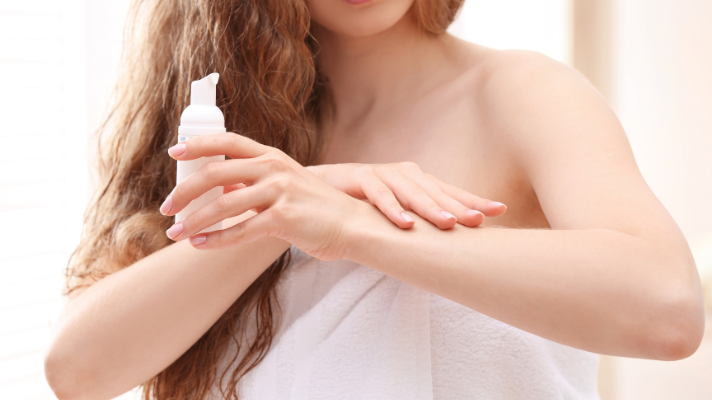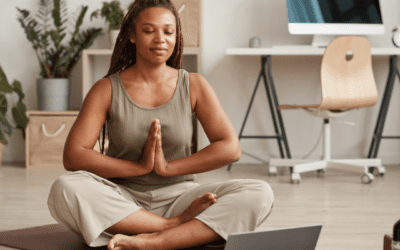Ayurveda self-massage, or Abyhyanga, has been an ancient practice for centuries to help individuals achieve balance. It’s a holistic approach to healing that focuses on the body, mind, and spirit. Using this technique, you can experience increased energy levels, improved sleep quality, and enhanced mental clarity. So why not give it a try? Learn why everyone should experience Ayurveda self-massage today!
What is an Ayurveda Self-Massage?
An Ayurveda self-massage, also known as “Abhyanga,” is a practice where individuals perform a massage on their own body using warm oils. It is an integral part of the Ayurvedic daily routine and is believed to promote self-care, relaxation, and overall well-being.
What you will need.
To perform an Ayurveda self-massage, you will need a suitable massage oil. Traditional oils used in Ayurveda include sesame, coconut, or specific herbal-infused oils based on your body type or dosha constitution. If you are unsure of your dosh, no need to worry. Use your favorite oil. Here’s a step-by-step guide for an Ayurveda self-massage:
1. Choose a warm, quiet, and comfortable space to relax.
2. Heat the massage oil slightly by placing the bottle in warm water for a few minutes.
3. Begin by applying a small amount of warm oil to the top of your head (scalp) and gently massage your scalp using circular motions with your fingertips.
4. Slowly move down to your face, ears, and neck, massaging in upward strokes.
5. Massage your arms, starting from the shoulders and moving down to the fingertips. Use long, sweeping motions on the long bones and circular motions on the joints.
6. Move to your chest and abdomen, massaging gently clockwise over the stomach to aid digestion.
7. Massage your back and spine with long strokes or circular movements, reaching as far as you can comfortably.
8. Finish by massaging your legs, starting from the thighs and working down to the feet. Pay attention to your knees, calves, and ankles.
9. Take your time and be mindful of areas that feel tense or need extra attention.
10. After the massage, allow the oil to penetrate your skin for 15-20 minutes before rinsing off during a shower or bath.
The Ayurveda self-massage nourishes and moisturizes the skin promotes circulation, relaxes the muscles, calms the nervous system, and balances the doshas. Therefore, performing self-massage regularly as part of a holistic self-care routine is recommended to experience its full benefits. I practice Abyangha daily.
The Benefits
Ayurveda self-massage, or Abhyanga, offers numerous physical benefits that promote overall health and well-being. This ancient practice, originating from India, involves applying warm oils to the body and massaging them into the skin. Here are some of the physical benefits of Ayurveda self-massage:
1. Improved blood circulation: The rhythmic strokes and gentle pressure during an Ayurveda self-massage help stimulate blood flow. This increased circulation nourishes the cells and tissues, promoting healing and rejuvenation.
2. Detoxification: Ayurveda self-massage stimulates the lymphatic system, which is crucial in removing toxins from the body. By enhancing lymphatic circulation, this practice helps detoxify the tissues, leading to improved overall health.
3. Muscle relaxation and flexibility: Ayurveda self-massage helps relieve muscle tension and stiffness. The warm oil penetrates deep into the muscles, soothing them and promoting peace. Regular massage also enhances flexibility and range of motion, reducing the risk of injuries.
4. Skin nourishment: The oils used in Ayurveda self-massage provide nutrition and hydration to the skin. They help improve skin texture, promote a healthy glow, and prevent dryness and flakiness. Additionally, the massaging action improves the absorption of these oils, enhancing their effectiveness.
5. Joint lubrication: Massaging the joints during Ayurveda self-massage helps increase synovial fluid production, which lubricates the joints. This can be particularly beneficial for individuals with arthritis or joint pain, as it helps reduce friction, inflammation, and discomfort.
6. Stress relief: Ayurveda self-massage is profoundly relaxing and can significantly reduce stress levels. The slow, mindful movements combined with the application of warm oils create a soothing experience that calms the nervous system, promotes better sleep, and reduces anxiety.
7. Boosted immune system: The increased circulation, detoxification, and stress reduction provided by Ayurveda self-massage all contribute to a more robust immune system. Regular massage can help prevent illness and improve overall health by enhancing the body’s natural defenses.
It’s important to note that Ayurveda self-massage is just one aspect of maintaining balance in the body. Combining it with other Ayurvedic practices such as a balanced diet, regular exercise, meditation, and proper sleep can further support optimal health and well-being.
Conclusion
Ayurveda self-massage is a great way to care for your body and mind. So, it has many health benefits that can help you achieve physical and mental well-being. Not only does it relax your muscles, but it also helps improve your circulation, boosts immunity, and reduces stress levels. After exploring this ancient practice’s benefits, why not try it? To learn more about Ayurveda self-massage (Abhyanga), contact our friend Julie Bernier, an Ayurveda Doctor.
Let us know if you practice Ayurveda Self-massage.









